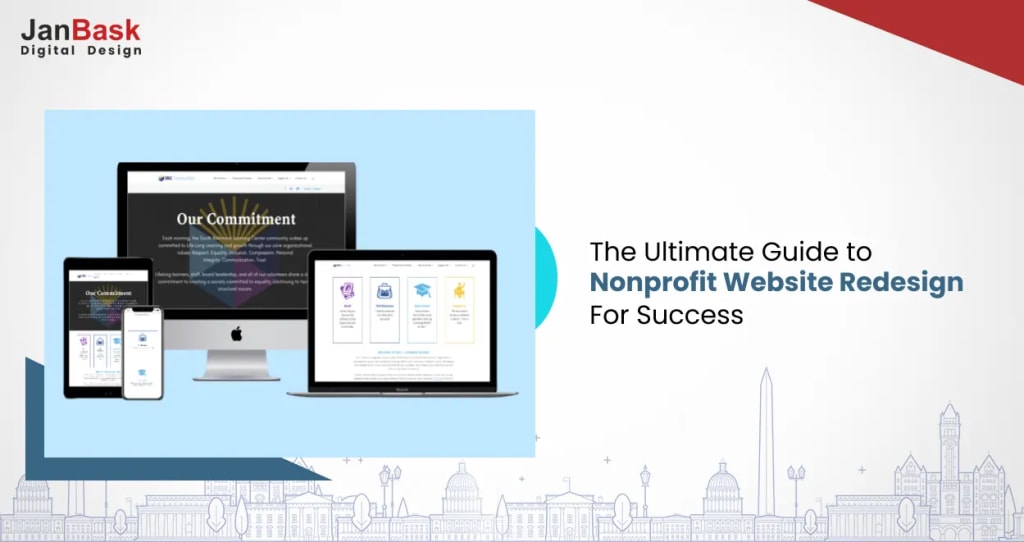A Comprehensive Guide To Nonprofit Website Redesign: Practices & Tips
In an increasingly digital world, a nonprofit's website serves as its virtual storefront, community hub, and donation platform all rolled into one. A well-designed and user-friendly website can significantly impact how effectively a nonprofit communicates its mission, engages supporters, and drives donations. However, as technology evolves and user expectations shift, periodic website redesigns become necessary to stay relevant and impactful in the digital landscape.

In the digital era, a nonprofit's online presence is paramount. A compelling website serves as a gateway to connect with supporters, engage volunteers, and drive impactful change. However, the digital landscape evolves rapidly, making periodic website redesigns essential for staying relevant and effective. If you're gearing up for a nonprofit website overhaul, here's a comprehensive guide to navigate the process and ensure a successful redesign.
Understanding Your Goals and Audience
Before diving into the redesign process, clarity on your objectives and audience is crucial. Identify your nonprofit's primary goals, whether it's fundraising, volunteer recruitment, or increasing awareness. Understanding your audience—donors, volunteers, beneficiaries—allows tailoring the website to meet their needs and expectations.
Conducting a Comprehensive Audit
Assess your current website's strengths, weaknesses, and performance metrics. Analyze user behavior, page views, and bounce rates to identify areas for improvement. Solicit feedback from stakeholders, volunteers, and users through surveys or interviews. This holistic approach provides invaluable insights for shaping the redesign strategy.
Crafting a User-Centric Design
User experience (UX) is the cornerstone of an effective website. Simplify navigation, ensure mobile responsiveness, and prioritize accessibility for diverse user groups. A clean, intuitive interface with compelling visuals and concise content enhances engagement and encourages visitors to explore further.
Content Revamp: Quality Over Quantity
Content is king, and a website redesign offers an opportunity to refine and refresh it. Focus on impactful storytelling that resonates with your audience. Highlight success stories, showcase impact metrics, and use multimedia to convey your nonprofit's mission compellingly. Prioritize concise, compelling content over verbosity.
Integration of Donation and Engagement Tools
Seamlessly integrating donation and engagement tools streamlines the user journey. Optimize donation processes, incorporate secure payment gateways, and highlight calls-to-action strategically. Enable easy sharing on social media platforms to expand your reach and foster community involvement.
SEO Optimization for Greater Visibility
Enhance your website's visibility through search engine optimization (SEO) strategies. Conduct keyword research relevant to your nonprofit's mission and optimize page titles, meta descriptions, and content. Regularly update and create fresh, engaging content to improve search engine rankings.
Testing and Iteration
Before launching the revamped site, conduct thorough testing across various devices and browsers. Address any bugs, glitches, or usability issues. Additionally, consider A/B testing different elements to identify what resonates best with your audience. Continuous iteration based on user feedback is key to maintaining an effective website.
Embracing Sustainability and Scalability
Build a website infrastructure that is sustainable and scalable. Ensure compatibility with future technological advancements and evolving user expectations. Consider open-source platforms or flexible content management systems that facilitate easy updates and expansions.
Engage and Train Your Team
A successful website redesign involves the entire team. Ensure everyone is aligned with the goals and functionalities of the new site. Conduct training sessions to familiarize staff and volunteers with the revamped features and functionalities to optimize usage.
Post-Launch Evaluation and Adaptation
The launch of the redesigned website marks the beginning, not the end, of the process. Monitor its performance post-launch, track key metrics, and gather user feedback continuously. Adapt and evolve the website based on insights and changing needs to ensure its continued effectiveness.
Conclusion
A nonprofit's website is its digital storefront, a platform to inspire, engage, and drive action. A comprehensive redesign strategy, encompassing user-centric design, compelling content, seamless functionality, and ongoing evaluation, is essential for ensuring its success. Embrace this opportunity to amplify your impact, connect with supporters, and drive positive change in the world.
As you embark on this transformative journey, remember: it's not just about a website; it's about creating a meaningful and lasting connection with those who share your mission.
The potential of your nonprofit lies not just in its mission, but in how effectively it communicates that mission to the world. A well-designed website is the canvas upon which your story of change is painted, inviting others to join in and make a difference.
About the Creator
Enjoyed the story? Support the Creator.
Subscribe for free to receive all their stories in your feed. You could also pledge your support or give them a one-off tip, letting them know you appreciate their work.





Comments
There are no comments for this story
Be the first to respond and start the conversation.